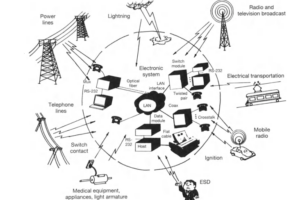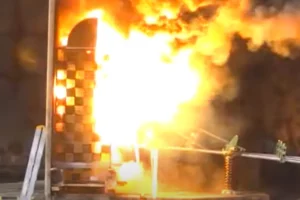Recommended Protection Relay Grading Interval
Typical Protection Relay Timing Errors
Protection relay grading intervals are critical in ensuring selective coordination in power systems. The recommended protection relay grading intervals typically depend on the type of relay and the specific requirements of the power system.| Timing Error Description | RELAY TECHNOLOGY | |||
|---|---|---|---|---|
| Electro-mechanical |
Posted in Design on June 1st, 2024
Electromagnetic Interference (EMI) and Electromagnetic Compatibility (EMC)IntroductionIn the early days of radio and telegraph communications, it was known that a spark gap generates electromagnetic waves that can cause interference or noise in various electronic and electrical devices such as radio receivers and telephone communications. Other sources of electromagnetic emissions such as lightning, relays, DC electric motors, and fluorescent lights also generate electromagnetic waves that can...
Posted in Design on May 21st, 2024
Selection of AC Short-circuit Protective Devices and Equipment
Industrial power distribution system shall be designed to have an adequate protection from all short-cirruit. The maximum short-circuit current at any point of the system should be less than the short-circuit rating of the equipment applied at that point. When systems are designed, adequate short-circuit protertion is a necessity, in other words, the equipment are deemed...
Posted in Design on May 19th, 2024
Earthing Systems – Design Calculations Analysis
Earthing systems are essential components of electrical systems, serving to safeguard individuals in close proximity from potential electric shocks and ensuring the proper functioning of equipment in the event of faults. These systems are engineered to establish a path of low impedance that facilitates the flow of fault currents through the Earth's conductive material. The initial phase of designing...
Comparison Various Earthing System
The introduction to Earthing System in Oil & Gas Installations was previously discussed in this article. This article provides further explaination on the advantages and disadvantages of various earthing systems.
Earthing ArrangementsIEC 60364 distinguishes 3 types of earthing arrangements using the two letter codes (i.e. TN, TT and IT). While the first letter indicates the connection between...Learn the basicsTutorialsMVA MethodAt this times where supercomputers could fit into a mobile phone and utility softwares are always available to do particular tasks, most Electrical Engineers tend to forget how to implement … Read more...
Cable SelectionCable Selection – Single Phase Earth Conductor Sizes Fault Loop Impedance High Voltage Cable Selection – Underground Cables Selection for Motors Read more...
Back to basicsDownloadsPopularImportant: Please take time to read the Disclaimer before downloading anything from this website. By downloading, you deemed to agree to the provisions of the disclaimer. LatestImportant: Please take time to read the Disclaimer before downloading anything from this website. By downloading, you deemed to agree to the provisions of the disclaimer. What we can offerOur ServicesTechnical ConsultingWe provide technical support, perform troubleshooting functions and resolve customer issues. Project Concept DevelopemntWe provide solutions to turn customer ideas into reality. Detailed EngineeringWe prepare all technical documents including to drawings to enable procurement of materials or and equipment and to carry out construction. Project ManagementLet us help you achieve your project goals and objectives within scope, time, and budget. ConstructionWe build and deliver your project according to your requirements, specifications, budget and schedule. MaintenanceWe provide solutions to ensure optimum performance of your equipment. Join my networkGet in touchDesign GuidesThis design guide is intended provide typical electrical installation scenarios with each scenario to include compliance to standards. As their are many ways of complying with standards,this design guide is prepared to suit the minimum standards requirements. While design principles equally applies to larger and more projects, this design guide will not attempt to address the design needs of those installations. Philippine Electrical Code
A Design Guide according to the Philippines Electrical Code is available at Filipino Engineer Wiki | |||





